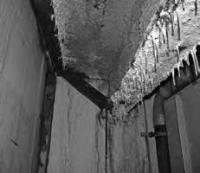What Went Wrong?: Diagnosing Building Envelope Distress

Why: Without proper diagnosis, building envelope problems are unlikely to go away. While superficial repairs might seem to redress the condition, more often than not, they actually make the situation worse, usually by trapping water or introducing materials incompatible with the existing construction. Using examples, this article explores some of the varied causes of distress and failure in facades, plazas and building entrances, parking structures, and roofs, and look at the systematic, if sometimes complex, process of uncovering—and resolving—the source of the problem.
What: With the many components that need to work together to create a weather-resistant, thermally insulating building enclosure, it’s easy to see how compromising just one of these, whether through design omission or construction error, can have a disastrous effect on the entire system. Where more than one flaw exists, the probability of failure is compounded. For historic structures, including Modern-era buildings of the mid-twentieth century, time and exposure can aggravate flaws inherent to the original design or fabrication, increasing the risk of building envelope distress. Older buildings, therefore, demand diligent maintenance and prompt, appropriate repairs to keep emerging issues at bay, lest they devolve into major disasters.
How: This article presents five case-study examples of building envelope problems: loose masonry, a water-damaged plaza, corroded steel connectors in a double-tee parking garage structure, a Hurricane Sandy-induced roof failure, and a blizzard-induced curtain wall failure. It offers the lessons learned from each forensic investigation.


Add comment
Log in to post comments